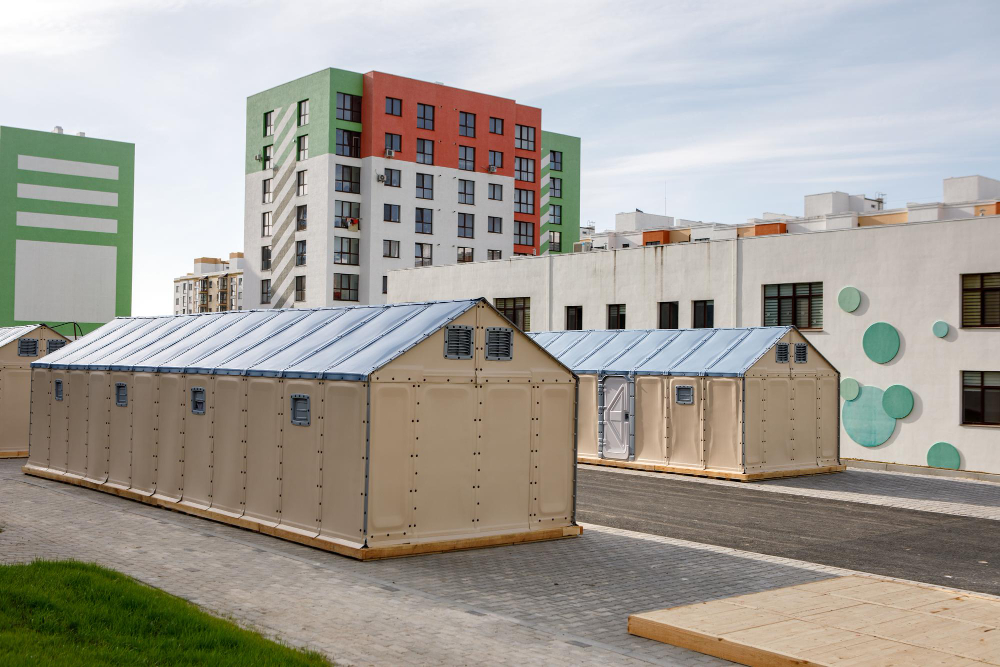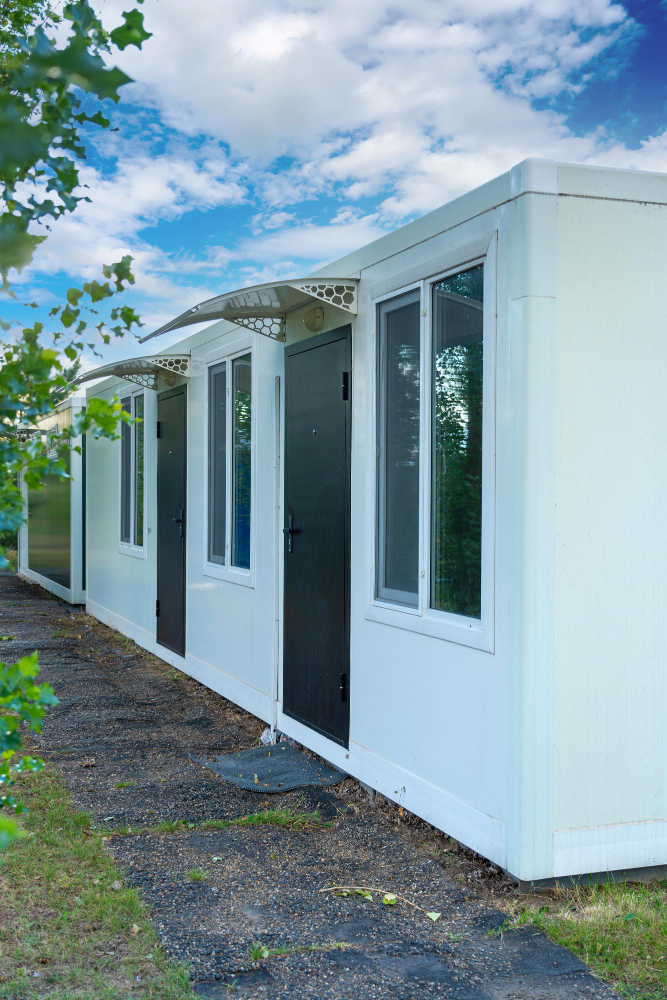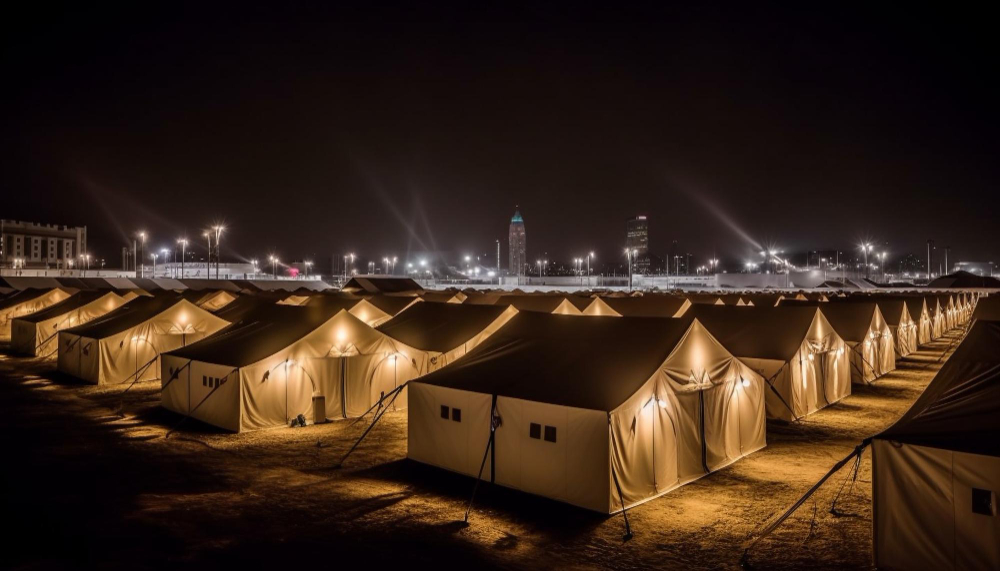Last updated on
Imagine facing a natural disaster—a scenario no one wishes for, but many must prepare for. Emergency shelters become a beacon of hope and safety in these critical times. Now, consider the impact of these shelters not just on immediate survival but also on the environment.
The concept of eco-friendly emergency shelters integrates sustainability into disaster response, offering a responsible and forward-thinking approach to crisis management. As you delve deeper, you’ll discover the multifaceted benefits of eco-friendly emergency shelters.
These structures aren’t just temporary refuges; they represent a commitment to preserving the planet even in the face of adversity. From their design to deployment, these shelters embody a holistic approach to environmental stewardship and disaster relief. This article explores how these innovative shelters are revolutionizing disaster response, marrying ecological awareness with life-saving functionality.
The Evolution of Emergency Shelters

The development of emergency shelters over time has been significant, moving from simple tents to more substantial structures. Early designs prioritized swift provision with minimal focus on environmental consequences. A contemporary portable emergency shelter signifies a significant shift.
These shelters are designed for rapid deployment and environmental friendliness, featuring materials and designs that reduce ecological impact, such as recycled components and energy-efficient elements. Their construction demonstrates a dedication to sustainability. Utilizing local materials reduces transport emissions, and using renewable energy, like solar panels, reduces the carbon footprint.
Features like water collection and filtration systems enhance self-sufficiency and reduce dependence on outside resources. Customization is a key aspect of these shelters. They can be tailored to various climatic and geographic conditions, providing safety and comfort in diverse disaster scenarios without sacrificing their green ethos.
Integrating Community Involvement

Community engagement in the deployment of eco-friendly emergency shelters is crucial. It ensures the shelters align with the specific requirements of the communities in need. Involving local residents in planning and building creates job opportunities and instills a sense of ownership and responsibility for these shelters.
Educating communities about the benefits and features of these shelters is vital. This knowledge fosters a deeper understanding and appreciation of eco-conscious practices, potentially influencing greener habits beyond the use of the shelters.
Feedback from communities utilizing these shelters is also incredibly valuable. It offers perspectives on effectiveness and areas for improvement, guiding the evolution of future designs toward greater sustainability and efficacy. Continuous dialogue between providers and users is essential for ongoing innovation and progress.
Sustainable Materials and Technologies

Eco-friendly emergency shelters are at the forefront of sustainability in their material and technological choices. Often incorporating recycled or biodegradable materials, these shelters lessen waste and environmental impact. Advances in material science have led to the creation of robust, weather-resistant, and eco-friendly building materials and fabrics.
Technological innovations are also vital. Solar-powered systems for lighting and heating reduce reliance on non-renewable energy sources. Enhanced insulation materials ensure a comfortable interior, essential for occupant well-being.
Incorporating smart technology improves these shelters’ efficiency. Remote monitoring and automated climate control systems adapt to different environmental conditions, increasing their practicality and efficiency.
Disaster Preparedness and Response

Eco-friendly emergency shelters play a pivotal role in disaster preparedness and response. Their ease of assembly and portability allow for swift deployment following disasters, providing immediate relief to affected individuals.
These shelters are also instrumental in extended disaster response strategies. Their sustainable features make them suitable for prolonged use, serving as a link between immediate disaster relief and the eventual rebuilding of permanent structures. This strategy meets immediate needs while considering the long-term environmental impact of emergency responses.
Incorporating these shelters into national and global disaster response plans underscores the importance of sustainable practices in emergency management, emphasizing the need to consider environmental impacts in all facets of disaster response.
Education and Awareness
Increasing awareness about the significance of eco-friendly emergency shelters is essential. Educational campaigns targeting governments, NGOs, and the public emphasize these shelters’ benefits, highlighting their role in both immediate response and long-term environmental preservation.
Training programs for disaster response personnel focus on the assembly, upkeep, and optimal utilization of these shelters, maximizing their effectiveness. Public education is equally vital.
Informing the broader population about the advantages and functions of eco-friendly emergency shelters promotes a more comprehensive understanding and appreciation of sustainable practices, potentially boosting public support for these initiatives and spurring further innovation and adoption.
The Takeaway
Eco-friendly emergency shelters mark a significant advancement in disaster response. They represent a dual commitment to providing prompt, efficient aid while safeguarding the environment. These shelters are more than mere temporary havens; they symbolize the integration of humanitarian assistance with environmental sustainability.
Embracing these solutions, the future of disaster management and response becomes more effective, compassionate, and more aligned with the planet’s needs. The journey toward a more sustainable and responsive disaster management system is ongoing, with eco-friendly emergency shelters at its forefront.
Related reading:
Table of Contents





